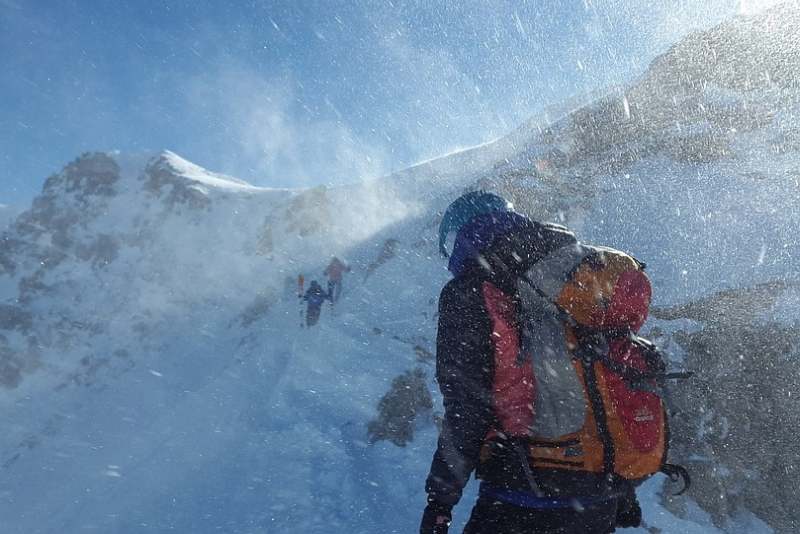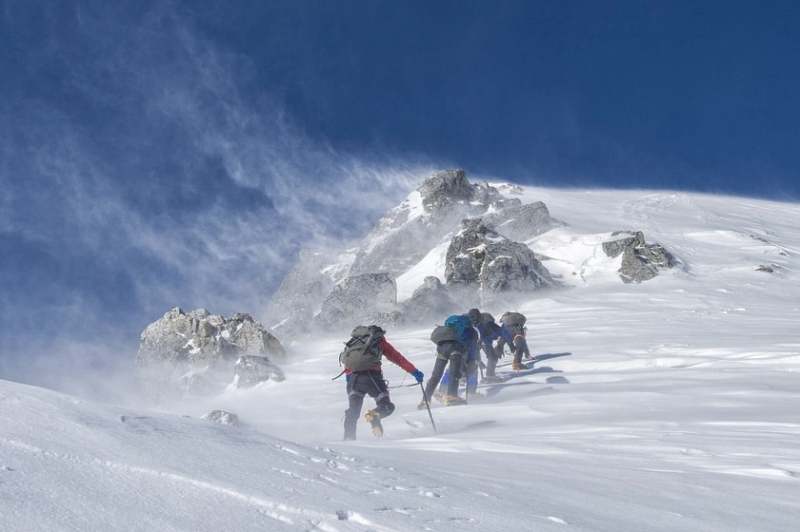Dressing in layers has always proven to be very practical, be it on an expedition trip or on a camping trip with the family. The sensible combination of the different clothing layers that you either put on or take off depending on the weather lets you manage varying temperatures with a minimum of clothing to pack.
How to layer: To understand layering your clothing for outdoor activities, you need to know the function of each layer:
- Base layer (underwear layer): wicks sweat off your skin
- Middle layer (insulating layer): retains body heat to protect you from the cold
- Outer layer (shell layer): shields you from wind and rain
Table of Contents
Base Layer: Moisture Management
The first layer, the one right on the skin, needs to transport moisture away from the body and keep it dry. It should help regulate temperature and humidity, has to cool when you sweet, and warm you in cold weather
Today, functional underwear made of synthetic fibers such as polyester or polypropylene is the best choice in warm and moderate temperatures. Synthetic fabrics, merino wool blend fabrics, or 100% merino wool underwear is suitable for cold temperatures. Functional underwear should fit snug, crease-free, and be comfortable on the skin. Ideally, seams are flat to avoid chafing, and an incorporated antibacterial finish, such as silver ions prevents odor. Merino wool as a natural product combines all the positive properties of synthetic fibers, and because wool is self-cleaning, it does not smell even after prolonged use.
Middle Layer: Insulation
The second layer is for isolation
The insulation layer is carried over the functional underwear, absorbs moisture from the first layer, and provides insulation. Although it is called the second layer, it can consist of several layers, like two thin fleece sweaters on top of each other.
Depending on weather conditions, temperature, and activity, sweaters, jackets, and vests made of functional materials such as fleece, down, or other synthetic fibers are excellent insulators. Cotton is unsuitable as it retains moisture.
The second layer is not really windproof and must not be waterproof or water repellent. That would block the transfer of water vapor to the next layer and lead to build-up moisture. You would feel like you are in a sauna.

Outer Layer: Rain and Wind Protection
The third and outer layer protects against the effects of the weather
The third layer serves as protection against snow, water, and wind. What’s best depends on our activities and on the environmental conditions to expect. Whether we need a light rain jacket or a tough expedition jacket, hardshell come in many designs and intended uses. What they all have in common is that this outer layer is exposed to the weather and must be waterproof and breathable as well as water-repellent and windproof. Good hardshell jackets have their prices but are a good investment for your comfort and safety.

Why dress in Layers?
If you dress cleverly and thoughtfully in layers you can easily compensate for weather and temperature changes. Depending on your needs and what you are most comfortable simply add or take off layers when conditions change.
- Tips For Beginner Fisherman - June 16, 2022
- Why Camping Has Become So Popular Lately - October 28, 2021
- Complete Guide To Using Tent Stakes Correctly - October 19, 2021




